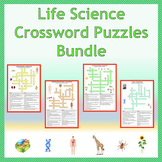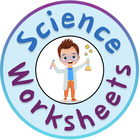

This resource includes a ready-to-use interactive activity students can complete on any device. Easel by TPT is free to use! Learn more.

Are you looking for no prep, printable, engaging, and fun science puzzles for students to practice science vocabulary skills?These puzzles are great for a quick assessment tool, a homework assignment, extra practice, morning work, early finishers, bell ringers, lesson plan supplements, or a science
$18.80 Price $18.80 $104.45 Original Price $104.45 Save $85.65 View Bundle
Are you looking for no prep, printable, engaging, and fun Life Science Puzzles for students to practice Life Science vocabulary knowledge?This bundle includes many crossword puzzles to learn and review Life Science vocabulary words. These puzzles are great for a quick assessment tool, a homework ass
$5.40 Price $5.40 $29.95 Original Price $29.95 Save $24.55 View Bundle
This is a crossword puzzle about the Skeletal and Muscular Systems. This puzzle is great for a quick assessment tool, a homework assignment, extra practice, morning work, early finishers, bell ringers, lesson plan supplements, or a science station.
Bone, Calcium, Femur, Rib cage, Skull, Osteoblasts, Bone marrow, Joint, Cartilage, Tendon, Ligament, Muscle, Smooth Muscle, Skeletal Muscle, Cardiac Muscle, Involuntary Muscle, Voluntary Muscle
Answer key included.
For updates about sales and new products, please follow my store:
Your feedback is important to me and can help you earn credits on TpT! Please rate this product.
Total Pages Answer Key Teaching Duration 40 minutes Worksheets Assessment Printables Report this resource to TPTReported resources will be reviewed by our team. Report this resource to let us know if this resource violates TPT’s content guidelines.
Use argument supported by evidence for how the body is a system of interacting subsystems composed of groups of cells. Emphasis is on the conceptual understanding that cells form tissues and tissues form organs specialized for particular body functions. Examples could include the interaction of subsystems within a system and the normal functioning of those systems. Assessment does not include the mechanism of one body system independent of others. Assessment is limited to the circulatory, excretory, digestive, respiratory, muscular, and nervous systems.